Collection
Theme
Country
Date
Location
Type
8 results
Decomposing the Colonial Gaze
This collection documents the work of a community-based partnership between the Antislavery Usable Past project and Yole!Africa in Goma and Lubumbashi. The project is based on an archive of photography produced by the British missionary Alice Seeley Harris during her time in the Congo Free State in the late nineteenth and early twentieth century. The project has used the visual archive as a basis for working with young people to explore the history and legacies of colonialism during the time at which the Congo Free State was under the personal ownership of King Leopold II of Belgium.
Defining what the antislavery usable past of these images is raises questions of power and representation. Who gets to decide? The writing of history is a powerful tool; who is included and excluded from the story, indeed, who gets to write it in the first place, is a reflection of the inequalities of the society within which that history is produced. Working with a colonial archive in Britain - a former centre of empire - raises issues about who gets to access history. For formerly colonised people their histories, or at least the portion of their histories relating to the colonial experience, are often found in the archives, museums, and art galleries of the former colonising power. Alice’s photographs, for example, eventually became part of the archive of the British and Foreign Antislavery Society, which subsequently became the present-day NGO Antislavery International. The archive is held at the Bodleian Library, University of Oxford. For people resident within the former spaces of empire, the physical impracticality of visiting the collection means a separation from the objects, documents, and images which represent their past.
This project offers a new way of working with colonial archives and in particular with the living communities whose past is present within these images of imperial exploitation. Working with these images within the communities that they represent is an important part of ceding control of the past. The aim is to make history useful and usable by telling the stories that matter to them. Returning photographs from Alice's archive to the country in which it was produced allows Congolese people to decide for themselves what the usable past of the images might be. Developments in digitisation mean that an archive can be liberated from its physical location. With generous permission from Antislavery International, the Bodleian Library digitised the entire surviving collection of 509 photographs. Transformed from a rather unwieldy set of boxes into a hard drive, the collection gained the mobility necessary to work with partners in the Congo.
Through the critical and creative programme of education developed by Yole!Africa, Alice's images have circulated among young people in Goma and Lubumbashi, who actively engage them when discussing their ideas about history, identity, and memory. Their powerful and insightful analysis of the images has given the photographs new meanings, which make them relevant for the present, not only in Congo, but also in former colonizing nations. Moreover, their artistic responses to the past demand that we reflect on the priorities motivating young people in formerly colonized countries and their critiques of contemporary society. Self-representation is central to the idea of freedom. Yole!Africa's Executive Director Cherie Rivers Ndaliko has written about the power of self-representation stating that "When one's story is one's only possession of value, telling it becomes a matter of life and death; storytelling, more than taking arms, restores agency to those who have historically been the subject, indeed the collateral damage in this battle. With this in mind, we have actively sought the stories and opinions of those historically subjected to colonial domination, inviting them to amend historical records with their responses to colonial representations.
Guide for users
The photographs have been digitised along with their original captions. The original captions have been used to title each image. This is part of the work of preservation but the captions sometimes use language and concepts that are not in common parlance today. For example, half caste; although this language is offensive to modern audiences it is important to understand how viewers would have understood the image during the period, including the use of racial language to shape the meaning of the photograph. Search terms do not replicate this language.
You can search the images using geographic location. The original spelling of the place names contained within the caption have been used for the title of the image, however, some place names have changed their spelling over time e.g. Loanda; and Luanda. Tags have used the modern spelling of the place name. Items are tagged with place names from the period as well as the modern place name e.g. Leopoldville; and Kinshasa. You can search via Country - the place where the image was produced e.g. Angola.
The images have been tagged using generalised description of the individuals who feature in them e.g. African child; or European man. These terms are inadequate as they do not allow for the specificity that should be attributed to individual subjectivity, they also remove peoples' right to self-definition. The captions for the images do not contain the detailed information about the sitters which would allow for a greater degree of clarity. Judging a persons race or ethnicity based on a photograph risks wrongly attributing or imposing meaning, however, in order to make the archive searchable these terms have been used.
Each image has a zoom function will allows the viewer to examine the photograph in detail. If you click on the image you can navigate with the zoom to look at an individual's stance, expression, and other details. Humanitarian photography has employed techniques which have tended to erase the individual and present a suffering mass. The zoom function has been included so that viewers can engage with the people represented as individuals.
A selection of the photographs were used in the Congo Atrocity Lantern Lecture. Part of the glass slide collection owned by Antislavery International and housed at the Bodleian Library, University of Oxford has been digitised by this project. You can search Related Items to view the lantern slides, or you can click through to the Congo Atrocity Lantern Lecture.
Both the original Alice Seeley Harris Archive and the Congo Atrocity Lantern Lecture represented African people through the colonial gaze. In replicating these archives we are very aware of the potential to reinstate that particular way of seeing difference. In order to make sure that this mode of representation is balanced by material which is self-representative we have commissioned two projects Decomposing the Colonial Gaze: Yole!Africa; and You Should Know Me: Photography and the Congolese Diaspora. You can search Alternative Tags, or you can click through to these collections to find new material which has been inspired by and critically engages with the historic archive.
The project has also collaborated closely with the Antislavery Knowledge Network, which is based at the University of Liverpool, and seeks community-led strategies for creative and heritage-based interventions in sub-Saharan Africa.
Copyright and takedown policy
Copyrights to all resources are retained by Antislavery International, who have kindly made their collections available for educational and non-commercial use only. All efforts have been made to obtain copyright permission for materials featured on this site. If you are aware of instances where the rights holder(s) has not been given an appropriate credit, please let us know. If you hold the rights to any item(s) included in this resource and oppose to its use, please contact us to request its removal from the website.
Email: [email protected]
Acknowledgements
This archive would not have been possible without the generous access given to the project by Antislavery International. In particular we would like to thank Dr Aidan McQuade and Dr Anna Shepherd. The digitisation was completed by the Bodleian Library, University of Oxford. Archivist Lucy McCann gave invaluable help with locating the full archive. We would like to thank Nick Cistone and Linda Townsend for their assistance with this process. Mike Gardner at the University of Nottingham has lent his technical support throughout the project. Discussions about this project were greatly enhanced by conversations with Dr Mark Sealy (Director, Autograph ABP) and Dr Richard Benjamin (International Slavery Museum). Congolese artist Sammy Baloji offered unique insights into the relationship between past and present forms of representation. This project was supported by the Arts and Humanities Research Council. Further thanks go to the Antislavery Knowledge Network, based at the University of Liverpool.
Further reading
Marouf Hasian Jr., Alice Seeley Harris, the atrocity rhetoric of the Congo Reform Movements, and the demise of King Leopold's Congo Free State, Atlantic Journal of Communication, 23:3, (2015), pp. 178-92
Kevin Grant, 'Christian critics of empire: Missionaries, lantern lectures, and the Congo reform campaign in Britain', Journal of Imperial and Commonwealth History, 29:2, (2001), pp. 27-58
Kevin Grant, 'The limits of exposure: Atrocity photographs in the Congo reform campaign', in Fehrenbach, Heide and Rodogno, Davide (eds), Humanitarian photography: A history, (Cambridge: Cambridge University Press, 2015) pp. 64-88
Fuyuki Kurasawa, The sentimentalist paradox: On the normative and visual foundations of humanitarianism, Journal of Global Ethics, 9:2 (2013), pp. 201-14
John Peffer, 'Snap of the whip / Crossroads of shame: Flogging, photography, and the representation of atrocity in the Congo Reform campaign, Visual Anthropology Review, 24:1 (2008), pp. 55-77
Christina Twomey, 'Framing atrocity: Photography and humanitarianism,' History of Photography, 36:3 (2012), pp. 255-64
Mark Sealy, "http://etheses.dur.ac.uk/11794/1/Sealy_Revised_Phd_Decolonizing_the_Camera-_Photography_in_Racial_Time__.pdf' Decolonising the camera: Photography in racial time' (Unpublished PhD thesis, University of Durham, 2016)
Sharon Sliwinski, The childhood of human rights: The Kodak on the Congo, Journal of Visual Culture, 5:3 (2006), pp. 333 - 363
Sharon Sliwinski, 'The childhood of human rights: The Kodak on the Congo, Journal of Visual Culture, 5:3 (2006), pp. 333 - 63
Links
http://www.liverpoolmuseums.org.uk/ism/exhibitions/brutal-exposure/alice-seeley-harris.aspx" Brutal Exposure at the International Slavery Museum.
https://soundcloud.com/autographabp/alice-seeley-harris-interview" Interview with Alice Seeley Harris
https://autograph.org.uk/exhibitions/congo-dialogues" Congo Dialogues: Alice Seeley Harris and Sammy Baloji, Autograph ABP
T. Jack Thompson, http://www.internationalbulletin.org/issues/2002-04/2002-04-146-thompson.pdf" Light on the dark continent: The photography of Alice Seeley Harris and the Congo atrocities of the early twentieth century https://olijacobsen.files.wordpress.com/2015/03/missionary-campaigns-and-atrocity-photographs.pdf
Daniel J. Danielsen and the Congo: Missionary campaigns and atrocity photographs (Brethren Archivists and Historians Network, 2014)
https://www.liverpool.ac.uk/politics/research/research-projects/akn/">Antislavery Knowledge Network, University of Liverpool
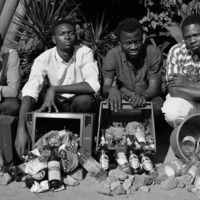
Yole!Africa: Student Photographs
This collection documents the work of a community-based partnership between the Antislavery Usable Past project and Yole!Africa in Goma and Lubumbashi. The project is based on an archive of photography produced by the British missionary Alice Seeley Harris during her time in the Congo Free State in…
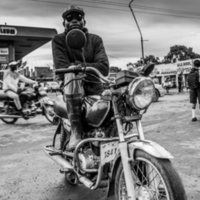
Yole!Africa: Student Photographs
This collection documents the work of a community-based partnership between the Antislavery Usable Past project and Yole!Africa in Goma and Lubumbashi. The project is based on an archive of photography produced by the British missionary Alice Seeley Harris during her time in the Congo Free State in…
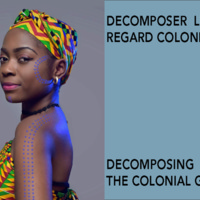
Decolonising the Colonial Gaze
Decolonising the Colonial Gaze
This collection documents the work of a community-based partnership between the Antislavery Usable Past project and Yole!Africa in Goma and Lubumbashi. The project is based on an archive of photography produced by the British missionary Alice Seeley Harris during…
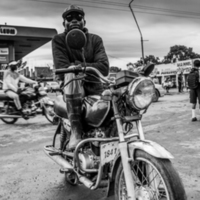
Danze: A Film by Yole!Africa
About the Collection
This collection documents the work of a community-based partnership between the Antislavery Usable Past project and Yole!Africa in Goma and Lubumbashi. The project is based on an archive of photography produced by the British missionary Alice Seeley Harris during her time in…
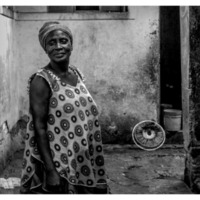
Yole!Africa: Student Photographs
This collection documents the work of a community-based partnership between the Antislavery Usable Past project and Yole!Africa in Goma and Lubumbashi. The project is based on an archive of photography produced by the British missionary Alice Seeley Harris during her time in the Congo Free State in…
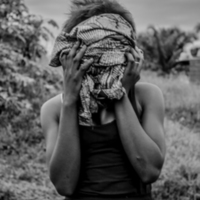
Yole!Africa: Student Photographs
This collection documents the work of a community-based partnership between the Antislavery Usable Past project and Yole!Africa in Goma and Lubumbashi. The project is based on an archive of photography produced by the British missionary Alice Seeley Harris during her time in the Congo Free State in…
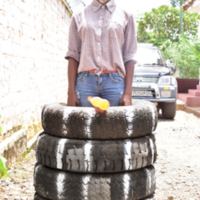
Yole!Africa: Student Photographs
This collection documents the work of a community-based partnership between the Antislavery Usable Past project and Yole!Africa in Goma and Lubumbashi. The project is based on an archive of photography produced by the British missionary Alice Seeley Harris during her time in the Congo Free State in…
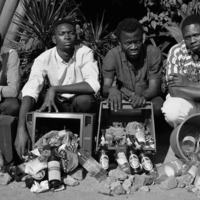
Yole!Africa: Student Photographs
This collection documents the work of a community-based partnership between the Antislavery Usable Past project and Yole!Africa in Goma and Lubumbashi. The project is based on an archive of photography produced by the British missionary Alice Seeley Harris during her time in the Congo Free State in…